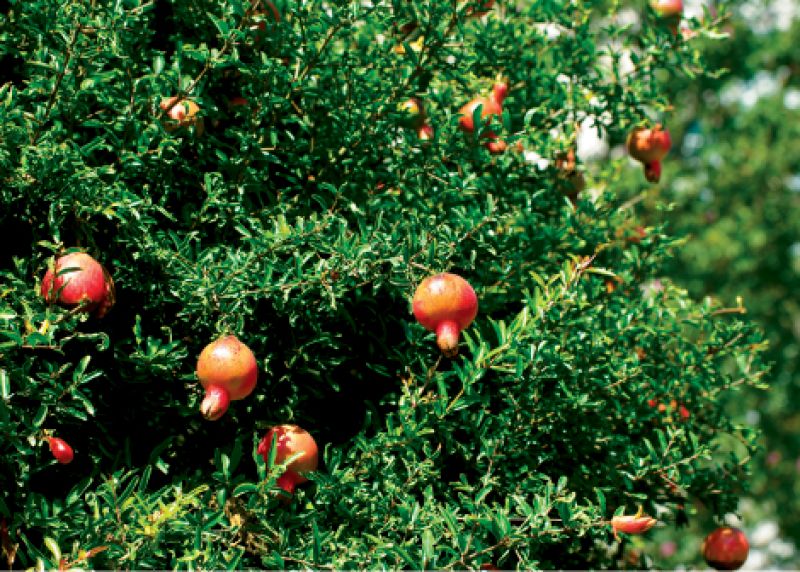
Is your hot-weather garden on the wane? Want an elegant and versatile solution to carry it into fall? Consider the power of the pomegranate. Not only is it an ideal tree or shrub to visually brighten up a landscape as it transitions from summer, but gardeners can be richly rewarded with its highly nutritious fruit. The pomegranate, an easy grower for our area, loves heat and well-draining sandy soil and can even tolerate mild droughts, as well as a little salt in its water.
This beauty has an interesting urn-shaped summer flower that comes in single- and double-bloom varieties, both attracting hummingbirds. The fall season brings the pomegranate’s uniquely shaped fruit reminiscent of a shiny Chinese lantern, lighting up Charleston gardens from August through October. Come winter, this deciduous plant will drop its leaves.
Native to the Middle East, the fruit is prized for its high levels of antioxidants, potassium, and vitamin C. Just under the peel, the arilli are the shiny, juice-filled sections that surround the edible seeds. In addition to being used in juices, salads, and myriad recipes, the whole fruit can be dried and showcased in decorative centerpieces, wreaths, and garlands. Once dried, it can last for years.
PUNICA GRANATUM ’WONDERFUL’
One of the most popular varieties, ‘Wonderful’ has been used commercially to produce juice. It grows up to 15 to 20 feet as a tree or shrub.
’EIGHT BALL’
This pomegranate produces a shiny, edible, black fruit that’s a little smaller than most varieties. It reaches about eight feet in height and is slightly more cold-hardy.
Nochi shibari’
If pretty flowers are more important than fruit production, check out this Japanese cultivar with its spectacular orange and white double blooms. It is mainly grown ornamentally and reaches 10 feet in height.
Hardiness: Zones 7-11
Light: Full sun
Water: Weekly, or more often in extreme heat
Soil: Sandy, well-draining soil with a pH of 5.5-7.0
Fertilize: Feed with a general purpose fertilizer in March and July.
Maintain: Prune off suckers and deadwood in the late dormant season (winter), but be careful as the branches have sharp spines. The plant blossoms on new wood.